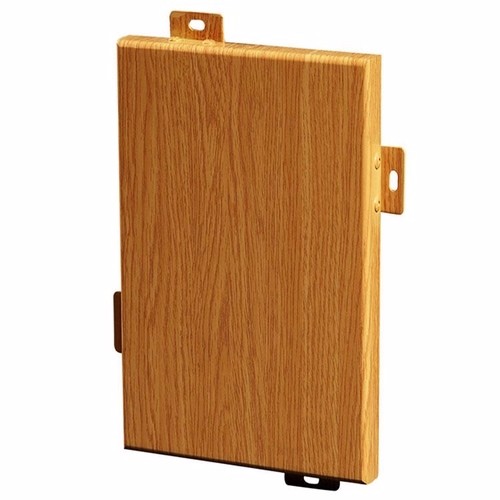How to identify the quality of imitation wood grain aluminum veneer?
Imitation wood grain aluminum veneer is also made of aluminum alloy material. Imitation wood grain aluminum veneer has light weight and low density, but imitation wood grain aluminum veneer has high strength and strong plasticity. Therefore, imitation wood Grained aluminum veneer has become the new favorite in the decoration market, so how do we choose imitation wood grain aluminum veneer in life? Let's listen to the sharing of Zhengyi building materials technicians!

1, Look at the appearance of imitation wood grain aluminum veneer
After you get the sample of wood-grain aluminum veneer, you must carefully observe the surface, because the wood grain on the wood-grain aluminum veneer is printed on the wood-grain paper by heat transfer process, so it is of high quality The surface texture of the product is clear and delicate, and it is not easy to fade. In addition, good-quality products have a smooth and straight appearance, and are uniform in thickness, without chromatic aberration, spots, and scars.
2, listen to the sound of imitation wood grain aluminum veneer
Due to the aluminum alloy used for wood-grain aluminum veneer, in addition to aluminum, in order to increase its strength and other characteristics, two raw materials, manganese and magnesium, are also added to it, but different addition ratios will result in different hardness. At the same time, the imitation wood grain aluminum veneer will be graded according to the purity of the aluminum. So when you buy, you should tap the sample with your hand. If the sound is clear and loud, it means that the ratio of various raw materials is very suitable and the quality is good.
3, Use solvent to scrub the imitation wood grain aluminum veneer
If you want to have the quality of imitation wood grain aluminum veneer, you can also use methyl ethyl ketone solvent to soak cotton yarn or soft cloth and then wipe the surface of the sample repeatedly. If the paint film on the surface is wiped continuously for more than a hundred times without being damaged, If it falls off, the quality is very good.
In summary, the above are a few ways to identify wood-grain aluminum veneer. You may wish to give it a try when buying this decorative material. Because for consumers, although it is very important to be able to buy cost-effective imitation wood grain aluminum decorative panel, more importantly, the quality must be guaranteed so that after installation, they can be used for a longer life.
